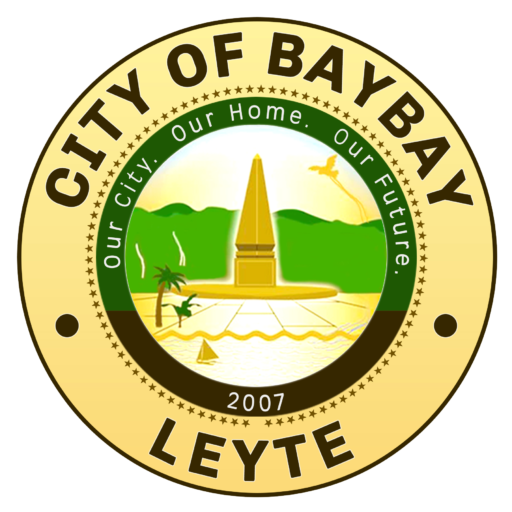
Agricultural Technologist Sopio Rim Jr. of the City Agriculture Office of the City of Baybay explains the goodness of brown rice to almost seven hundred pupils of the Carlos P. Garcia Elementary School at Zone 22, Baybay City, Leyte. (Photo credits: Jayvee Campomayor)
#Brown Rice for Good: Challenge Accepted by the Baybay City LGU
The BeRiceponsible Team of the City of Baybay conducted an Awareness Campaign about the Goodness of Brown Rice at the Carlos P. Garcia Elementary School located at Zone 22 in Baybay City.
This activity is part of the commitment of the Local Government Unit of Baybay to spread the good news about the goodness of brown rice to Baybayanons after winning the 2nd Place on the Nationwide Search for RICEponsible Champions which was spearheaded by the Department of Agriculture Philippine Rice Research Institute (DA-PhilRice). The search was participated in by 24 Local Government Units from the different parts of the country.
Along with this prestigious award is a big challenge to the City Government of Baybay to increase awareness about the goodness of brown rice thereby increasing the number of constituents with heathy rice eating habits. The advocacy also intends to improve the access of Baybayanons to affordable brown rice which will eventually result to better health among its constituents.
During the said activity, Agricultural Technologist Sopio Rim, Jr. of the City Agriculture Office of the city clarified that brown rice is not a variety of rice, rather it is the product of milling rice using the Pinawa Rice Mill.
According to the World’s Healthiest Food Website, “The process that produces brown rice removes only the outermost layer, the hull, of the rice kernel and is the least damaging to its nutritional value. The complete milling and polishing that converts brown rice into white rice destroys 67% of the vitamin B3, 80% of the vitamin B1, 90% of the vitamin B6, half of the manganese, half of the phosphorus, 60% of the iron, and all of the dietary fiber and essential fatty acids. Thus, fully milled and polished white rice is required to be “enriched” with vitamins B1, B3 and iron.”
Agricultural Technologist Rim confirmed this and said that eating brown rice is also good for those who want to trim down their weight because it contains high dietary fiber. He added that, based on experience, brown rice has a 71% grains recovery, compared to white rice which only have a 41% recovery, thus this means more income to the rice farmers in the city.
However, since the nearest Pinawa Rice Mill is in the hinterlands of Barangay Dao, Ormoc City, 44 kilometers away from Baybay City and could not be reached by a vehicle, the members of the Banahao Rice Farmers Association, from Barangay Banahao, Baybay City, Leyte, walked for almost a kilometer with the sacks of rice on their back just to be able to bring back home brown rice for their awaiting consumers. This, according to Agricultural Technologist Rim, is the reason why the cost of brown rice in the City of Baybay is a little higher than that of white rice now.

The members of the Banahao Farmers Association traverse almost a kilometer of very difficult and accelerating road just to have brown rice ready for their awaiting customers. (Photo credit: Sopio Rim Jr.)
Thus, the Banahao Farmers Association is currently working on a proposal to establish a Pinawa Rice Mill in their own barangay which shall provide milling services to six (6) adjacent barangays. The funding for this project shall come from the Bottom-up Budgeting Sustainable Livelihood Program (BUB-SLP) of the Department of Social Welfare and Development (DSWD), thru the Local Government Unit of Baybay City. If this project prospers, a healthier and chemical-free rice product will be available for the rice consumers of the City of Baybay. And because the rice mill will be established in Barangay Banahao, brown rice will then become more accessible and affordable to the consumers.
The RICEponsible Team also conducted the same awareness campaign in Villa Mag-aso Elementary School with 117 pupils, Gacat Elementary School with 250 pupils, and Plaridel Central School with 635 pupils. According to Head Nurse Ms. Jeanne Araneta of the Baybay City Division, these are the schools with the most number of malnourished children in the City of Baybay thus, the management thanked the Be RICEponsible Team for conducting the said activity in their school.
It could be remembersred that after each lecture, the children were fed with “brown rice pospas” and the team was amazed to see that the children loved it. (Marissa Miguel Cano with reports from Jason Ybañez)
###

